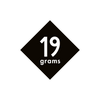You've probably seen latte macchiato and espresso macchiato side by side on a coffee menu. But what's the difference between the two? Although they sound similar, you're getting two very different drinks in your cup.
The espresso macchiato is one of the Italian classics. A simple espresso is "marked" with a blob of frothed milk. Macchiato in Italian means something like "stained" . This method of preparation originated in Italian espresso bars, where waiters and baristas quickly had to distinguish between espressos with and without milk. A shot of cold milk would simply dip under the crema, so a white spot of milk foam is spooned on top so the espresso macchiato isn't mistaken for a black espresso.
Nice to know: In Italy, a distinction is also made between Espresso Schumato - where, unlike Espresso Macchiato, only a spoonful of milk foam is spooned on top.
In specialty cafés, the espresso macchiato is nowadays often decorated with latte art. To get this embellishment right, the espresso cup usually needs to be filled, resulting in a drink with a bit more milk.
You could say that the latte macchiato is the exact opposite of the espresso macchiato. The latte macchiato is served in a large glass and is more diluted. This points to the drink's real origin: and that is as children's coffee. Even Italian kids can't handle that much caffeine, so parents pour a glass of warm, frothed milk with half a shot of espresso - or ordered this at the bar. The result is a layered drink with a light brown hue and cloudy milk foam.
Our baristas like to serve a caffè latte, where the lightly foamed milk, is poured over a simple espresso. This simplifies the menu and looks prettier at the same time.


